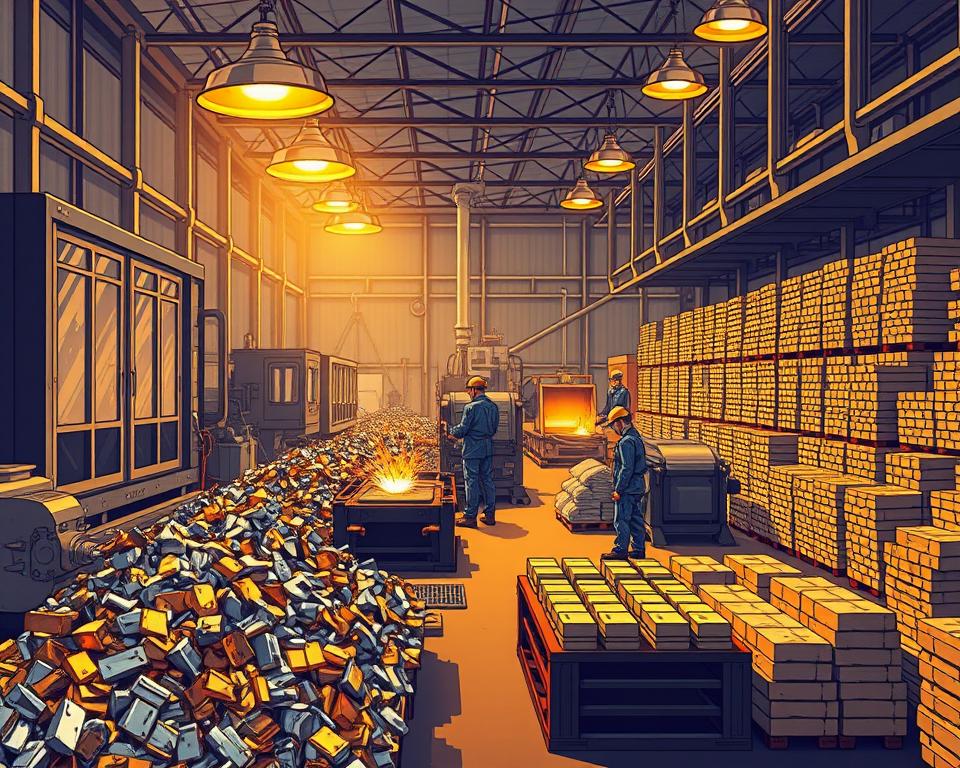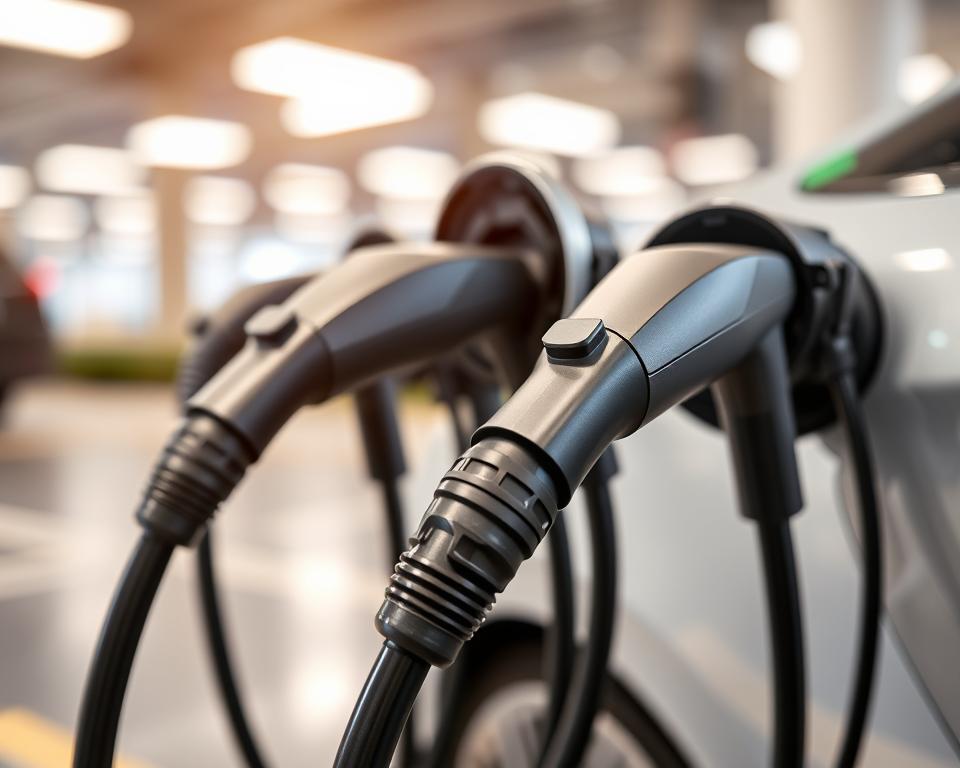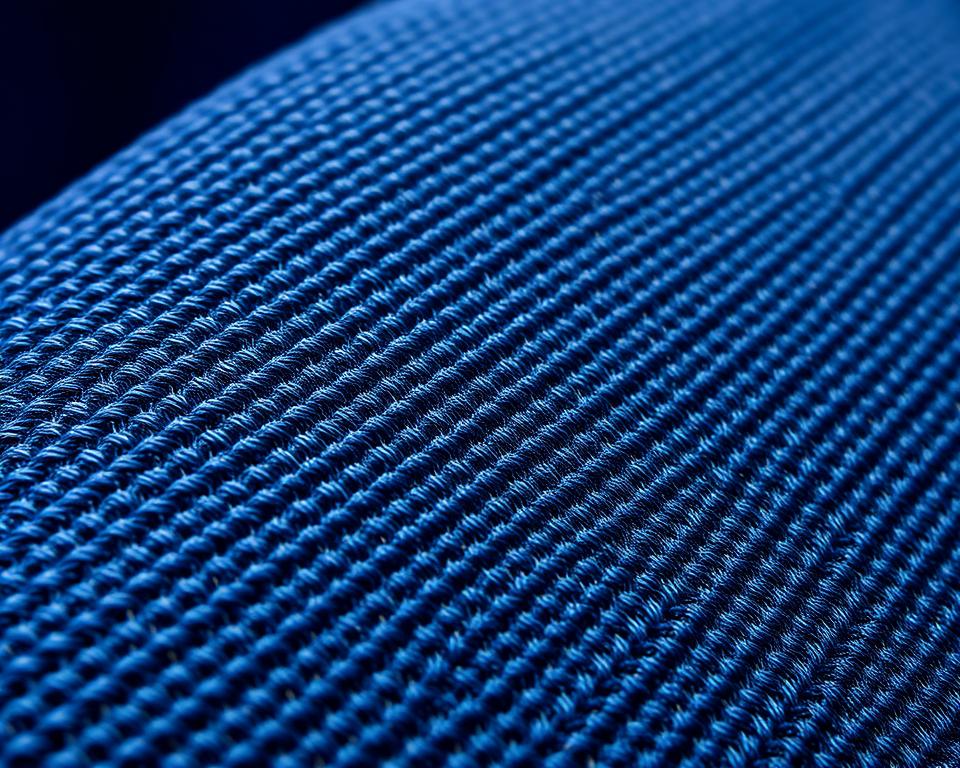Looking Forward: Fiber Optic Data Transfer Technology
Did you know a single hair-thin strand can now carry more than 100 Tbps of information each second? That capacity could handle streaming 12 million HD films at once—a leap from the 1950s, when researchers began using light for rudimentary signaling.
- Data transmission rates 100x faster than old copper lines
- Zero interference from power lines or radio signals
- Capacity to support 5G networks and 8K streaming
| Feature | Copper Cables | Optical Fibers |
|---|---|---|
| Speed | Up to 10 Gbps | 100+ Tbps |
| Range | Approximately 100 m | Over 70 km |
| Privacy | Prone to tapping | Highly resistant to eavesdropping |
Light pulses bounce through glass cores using total internal reflection, similar to a laser light bouncing in a mirrored corridor. This optical principle avoids data loss across vast spans. With growing video conferencing and IoT devices, these fibers prevent network overloads – Fiber coloring machine.
Evolution of Fiber Optic Communication Technology
Years of research turned the concept of optical data transmission into a working technology. Researchers in the 1950s discovered that glass strands could guide light—a concept that reshaped modern connectivity.

Early Experiments and Pioneers
In 1952, Narinder Singh Kapany demonstrated that light could propagate through curved glass fibers. He named the field “fiber optics,” establishing the basis for modern fiber networks. Alongside Harold Hopkins, he developed flexible imaging bundles that later inspired data transmission methods.
By the 1960s, labs demonstrated practical uses for these strands. Early systems faced challenges like signal loss, but persistent testing refined their design. Researchers found that ultra-purified glass cores extend signal reach with minimal distortion.
Key Fiber Optic Breakthroughs
In the 1970s, the first commercial deployments revolutionized the industry. Carriers switched from copper to fiber, enhancing call quality and bandwidth. Corning Glass Works achieved a critical breakthrough in 1970—low-loss optical fiber that could transmit signals over 65 kilometers.
| Date | Milestone | Impact |
|---|---|---|
| 1977 | First live phone traffic | Validated practical dependability |
| 1988 | Transatlantic cable TAT-8 | Linked Europe and North America |
| 1990s | Erbium-doped amplifiers | Enabled long-distance networks |
Modern advancements focus on speed and scalability. DWDM technology multiplexes many channels on one fiber concurrently. These leaps bridge lab experiments to the backbone of global communication systems.
Basic Principles of Fiber Optic Data Transfer
Light travels faster than anything else—so why not use it to send messages?. This straightforward concept underpins contemporary networks. Instead of slow electrons in copper wires, engineers use photons to zip data across continents. Here’s how it works.
Photon-Based vs. Electron-Based Signaling
Light pulses carry information more efficiently than electricity. Photons:
- Travel at ~186,000 mi/s (~99.7% of c)
- Generate no heat or EMI
- Support simultaneous multi-wavelength channels
| Criterion | Electron Signaling (Copper) | Photon Signaling (Fiber) |
|---|---|---|
| Speed | Up to 10 Gbps | Over 100 Tbps |
| Noise Susceptibility | Affected by power lines | Immune |
| Energy Use | High | Low |
The Mirror Effect Inside Glass Strands
Light stays trapped in the core—the central glass strand—thanks to total internal reflection. Because the core’s refractive index exceeds that of the cladding. Upon striking the boundary at a critical angle, it reflects internally, traveling long distances.
This design prevents signal loss. Even over long distances, 95% of the original light reaches its destination. Combined with laser precision, it ensures your video calls stay crisp and your downloads finish fast.
Various Fiber Cable Categories
Fibers come in diverse designs. The right cable type depends on how far your data needs to travel and how much information you’re sending. Let’s break down the two main categories and their specialized designs.
| Feature | Single-Mode | MMF |
|---|---|---|
| Core Size | 9 µm | 50–62.5 µm |
| Throughput | >100 GHz | ~35–500 MHz |
| Max Distance | 120 miles | ~1,600 ft |
| Common Uses | Telecom networks | Local area networks |
Hospitals use single-mode for MRI image transfers between buildings. Schools often pick multi-mode for classroom networks—it handles video streams without breaking budgets. Each cable category maintains connectivity, tailored to specific needs.
Fiber Optic Cable Construction and Key Components
Ever wondered what keeps your internet running smoothly during a storm This is due to advanced cable engineering. These high-tech threads use multiple layers to protect data while traveling at light speed.
Core, Cladding & Coating Explained
Each fiber’s core is ultra-thin, even narrower than human hair. This ultra-pure strand carries light signals using total internal reflection. The cladding layer, with a lower refractive index, reflects stray light back into the core.
An acrylate polymer coating encases the cladding and core. This 250-micron shield prevents scratches and moisture damage. Together, these components form the light-carrying highway inside every optical fiber.
Armoring and Outer Protection
Kevlar® reinforces the coated core, ensuring tensile strength. Aramid strands handle pulling forces to avoid fiber breakage. An outer polyethylene jacket completes the package, resisting weather, chemicals, and curious rodents.
| Component | Material | Role |
|---|---|---|
| Core | Pure silica glass | Light transmission |
| Surrounding Glass | Doped silica | Signal containment |
| Coating | Acrylate polymer | Physical protection |
| Outer Sheath | Polyethylene | Environmental shield |
Jacket colors indicate type: orange for multi-mode, yellow for single-mode. This simple system helps technicians quickly identify cable types during installations or repairs.
Working Principles Behind Data Transmission
How does information travel at light speed without getting lost It involves converting electrical pulses into controlled optical bursts. Each pulse represents binary code—flashes for 1s, gaps for 0s—creating a rapid-fire Morse code only lasers can read.
Photon-Based Signaling
Lasers emit ~500 million pulses/sec through fiber cores. By using QAM-16, four bits encode per pulse, multiplying throughput – Fibers in metal tube. This photon dance happens with near-zero electromagnetic interference, unlike older copper-based systems.
Handling Signal Dispersion and Attenuation
Two primary issues compromise signal integrity:
- Chromatic dispersion: Different light colors (wavelengths) arrive at varying speeds.
- Mode dispersion: Light paths scatter in multi-core cables.
Today’s fibers address these with these solutions:
| Solution | Outcome | Gain |
|---|---|---|
| Doped glass cores | Equalizes propagation speeds | ~40% reduction in pulse broadening |
| DSP units | Real-time error correction | 99.999% accuracy |
High-end fibers reduce attenuation to ~0.15 dB/km, improving by ~92% over initial versions. Paired with EMI-resistant layers, they preserve signal fidelity worldwide. The result? Your video call to Tokyo stays crystal clear, even during a thunderstorm.
Sophisticated Fiber Networking Techniques
How do video streams remain stable amid storms? The answer lies in specialized connectors and precision installation methods that form the backbone of modern networks. These components ensure seamless data flow across cities and continents.
Connectors and Splicing Techniques
Robust networks begin with correct fiber terminations. SC connectors offer tool-less insertion; LC connectors compress for high-density environments. MPO/MTP designs handle multiple strands at once—perfect for data centers moving massive files.
Two splicing methods dominate the field:
- Fusion jointing: Melts glass ends together for near-zero signal loss.
- Mechanical splicing: Aligns fibers with precision sleeves for quick repairs.
| Connector Type | Ideal Use | Typical Loss |
|---|---|---|
| SC | Enterprise networks | 0.25 dB |
| LC | High-density devices | 0.20 dB |
| MPO | Cloud applications | ~0.35 dB |
Contemporary Network Architectures
Modern designs require adaptable deployment methods. Micro-duct systems permit cable blowing; armored jackets resist severe environments. Municipal implementations route fiber to traffic systems and surveillance, enabling intelligent networks.
Telecom operators roll out hybrid assemblies, merging electrical and optical conductors. This approach supports 5G towers and IoT devices simultaneously, proving that smart design keeps pace with our connected world.
Bandwidth and Throughput Advantages
Think of data as water flowing through pipes—the wider the pipe, the more you can move at once. This bandwidth concept explains why modern networks need glass-based systems. While copper resembles a garden hose, fiber performs like a high-capacity firehose.
- Light signals traveling at 186,000 miles per second
- Many channels by WDM
- Error correction reducing resend requests by 80%
| Time Period | Max Speed | Cost per GB |
|---|---|---|
| 1980s | 45 Mbps | $1,200 |
| 2000s | ~10 Gbps | ~\$0.12 |
| 2020s | 178 Tbps | $0.0004 |
Throughput dictates online performance. Videoconferencing needs 5 Mbps per user, while VR demands 50 Mbps. NEC’s 2023 analysis found fiber nets serve ~40× more subscribers than copper at ~50% lower power consumption.
“Every dollar invested in high-capacity networks yields $3.80 in economic growth through improved productivity.”| “Each \$1 poured into high-bandwidth infrastructure returns \$3.80 in productivity gains.”
Enhanced performance trims OPEX. Signals travel 60 miles without repeaters versus copper’s 3,000-foot limit. This efficiency enables 8K video streaming, real-time AI processing, and seamless cloud backups—all while keeping your monthly bill under $100.
Overcoming Interference and Signal Loss in Fiber Systems
Have you experienced static-laden calls in storms? Copper wiring falters when EMI spikes. Optical fibers shrug off such noise. By leveraging photons rather than electrons, they eliminate interference from electricity or RF sources.
Inherent EMI Immunity
Unlike metal wires that act like antennas, glass strands don’t conduct electricity. Hence, optical networks remain unaffected by external interference. A 2023 study found 92% fewer data errors in industrial settings when using light-based systems compared to older methods – fiber ribbone line.
Mitigation of loss relies on:
- High-purity cores minimize photon scattering
- Precision laser alignment minimizes power waste
- Protective coatings prevent moisture damage
| Factor | Copper | Glass-Based |
|---|---|---|
| Noise Susceptibility | Significant | Negligible |
| Signal Loss per Mile | 3 dB | ~0.2 dB/mi |
| Service Frequency | ~Monthly upkeep | ~Yearly reviews |
“Our factory’s error rates dropped 80% after switching to light-based networks—no more machine downtime from radio interference.”| “After switching to fiber, error rates fell by 80%, eliminating downtime from RF noise.”
These cables thrive where others fail. Undersea lines resist seawater attack; desert runs survive sandstorms. With 99.995% uptime ratings, they’ve become the backbone of mission-critical systems worldwide.
Fiber’s Role in Telecom & Internet Services
How does your Netflix show arrive instantly from across the globe Fiber networks serve as the neural pathways of today’s Internet. They enable streaming, financial transactions, and more, using light to span oceans and landmasses.
Role in Long-Haul and Metro Networks
Undersea fibers run ~750,000 mi, handling ~99% of intercontinental data. Urban rings use these fibers to connect cell sites and corporate hubs. Optical transmitters modulate light; receivers demodulate at endpoints.
| Attribute | Copper Networks | Glass-Based Networks |
|---|---|---|
| Speed | ~1 Gbps | 100 Tbps |
| Lag | 5 ms/km | ~0.005 ms per km |
| Reliability | 99.9% | ~99.995% |
Application in Data Centers and Cable TV
Data centers rely on these cables for inter-rack communication, moving petabytes daily. Cable networks use hybrid optical/coax infrastructure to stream 4K. After Verizon’s 2023 fiber rollout, buffering issues dropped by ~73%.
Three economic benefits drive adoption:
- 60% lower maintenance costs than copper
- Scalability to handle 5G demands
- 40% energy savings per data unit
From Manhattan’s financial district to Pacific submarine routes, these communication systems prove that speed and reliability can coexist. In the words of an engineer: “Nothing outpaces light when transferring vast datasets.”
Next-Generation Fiber Innovations
What if your internet could handle 8 billion video calls at once. Upcoming breakthroughs promise to redefine data mobility. Advanced transceivers and modulation schemes drive network evolution.
Advancements in Laser Transmitters and Photodetectors
State-of-the-art lasers output ~200 channels concurrently, compared to ~40 ten years prior. These tiny chips pack 5x more power while using 30% less energy. Combined with graphene-based photoreceivers, they detect even minimal photon levels.
Major innovations encompass:
- Narrow-linewidth lasers reducing noise by 90%
- Photonics-integrated circuits shrinking hardware size
- AI-driven calibration maintaining peak performance
Coherent Optics & Multiplexing
Coherent systems treat light like radio waves, encoding data in its phase and amplitude. This trick boosts capacity 16-fold compared to older on-off signaling. Coupled with WDM, fibers can transport over 800 channels.
| Technique | Channels | Speed Gain |
|---|---|---|
| DWDM | ~160 | 80 Tbps |
| OFDM | 512 | ~120 Tbps |
| SDM | Multi-core | ~1 Pbps* |
*Experimental (NTT, 2023)
These systems integrate smoothly with existing infrastructure. Verizon’s 2024 upgrade used coherent tech to double network capacity without laying new cables. As one engineer noted: “We’re teaching old cables new tricks—the best is yet to come.”
Global Standards and Design Considerations
How do international calls remain glitch-free? Universal protocols guarantee seamless interoperability across diverse systems. Without these guidelines, networks would struggle with compatibility issues and performance gaps.
| Specification | Focus Area | Impact |
|---|---|---|
| ITU G.652 | Single-mode transmission | Supports >100 Gbps links |
| IEC 60793-2-50 | Mechanical reliability | Certifies two-decade service life |
| ITU G.654 | Undersea fiber | Prevents saltwater corrosion |
Testing & Quality Benchmarks
Consistent testing keeps networks running smoothly. Key benchmarks include signal loss (under 0.25 dB/km) and tensile strength (minimum 50 Newtons). Manufacturers run 200+ checks before shipping products, from temperature resistance to bend tolerance.
“Our compliance with IEC 61300-3-35 reduced installation errors by 65% last year.”| “Adhering to IEC 61300-3-35 led to a 65% drop in deployment mistakes.”
Verified components and accurate technical data prevent costly mistakes. Technicians rely on uniform color schemes and termination practices to link heterogenous gear flawlessly. This harmony keeps global data flowing without hiccups.
Real-World Fiber Deployment Examples
How do cities handle millions of simultaneous video streams without crashing Real-world deployments show how smart planning and advanced cables keep our digital world running smoothly. Let’s explore two groundbreaking projects that reshaped global connectivity.
City Fiber Rollouts & Metropolitan Backbones
NYC’s Metro Fiber initiative addressed slow copper infrastructure, which hindered business connectivity by ~40%. Engineers installed 800 miles of micro-trenched cables under sidewalks, avoiding subway tunnels and gas lines. Outcomes: Latency fell from ~14 ms to ~2 ms; throughput increased by ~600%.
| Challenge | Solution | Outcome |
|---|---|---|
| Subsoil crowding | 3D GIS route planning | ~92% quicker rollout |
| EMI challenges | Armored MC fiber | ~99.99% reliability |
| Budget constraints | PPP funding model | ~30% fewer expenses |
Subsea and Transcontinental Examples
MAREA spans ~4,000 mi from Virginia to Spain, delivering ~160 Tbps over 8 pairs. Teams contended with ~10,000 ft depths and marine hazards, deploying ROVs to trench cables into ocean floor. This $160 million project now carries 55% of Europe-North America traffic.
“Subsea systems require 200+ design revisions before deployment. Every meter matters when you’re laying cable across tectonic plates.”| “Over 200 design iterations are typical for undersea cables. Small changes hugely impact viability across plates.”
Differences by deployment scenario:
- City installations prefer bend-insensitive fiber for tight paths
- Subsea systems require titanium-reinforced sheathing
- Remote installations leverage solar-powered repeaters
Both approaches prove that strategic design and durable materials can transform how we move data. From Manhattan’s skyscrapers to Atlantic ocean floors, these networks form the silent backbone of modern life.
Economic Impact and Scalability of Fiber Networks
What fuels today’s streaming surge and telecommuting trend? It’s networks that pair CAPEX with OPEX efficiencies. Though \$60K/mi can be spent on installation, these fibers pay off over years of use.
Strategic Investment for Scalability
Upgrading to advanced networks cuts operational costs by 40% compared to copper systems. Maintenance expenses drop sharply—no more replacing corroded wires or fighting electromagnetic interference. A 2024 study showed:
| Expense Category | Copper-Based | Fiber-Based |
|---|---|---|
| Installation | ~\$45/m | ~\$28/m |
| Power Consumption | ~5 W/device | ~1.2 W/device |
| Service Calls | ~12 annually | 2/year |
Worldwide spending reflects this transition. Telecom giants plan to spend \$150 billion through 2027 expanding infrastructure. Locale upgrades hit ~300% ROI in 5 years via boosted efficiency and minimized outages.
Navigating Deployment Hurdles
Yet municipalities encounter three primary obstacles:
- Permitting delays adding 18 months to timelines
- Scarcity of skilled fiber technicians
- Community pushback against trenching
“Our Phoenix deployment took 22 months instead of 14 due to permit bottlenecks. Still, the network boosted local GDP by \$380 million annually.”| “Phoenix’s build required ~22 months, not 14, over permit delays—but delivered ~\$380M/year in GDP uplift.”
Novel remedies appear. Micro-trenching reduces street disruption by 80%, while public-private partnerships share financial risks. These approaches help communities harness the power of scalable, future-ready systems without breaking budgets.
Innovations and Future Prospects in Data Transmission
Fiber backbones are receiving performance upgrades. Scientists explore sub-micron fibers and advanced modulations beyond existing standards. These leaps promise to shrink global delays while handling tomorrow’s data avalanches.
Upcoming Fiber Innovations
MIT’s 2024 experiments suggest hollow-core fibers (air-filled) may cut latency ~30%. By routing photons through near-vacuum cores, they minimize refractive loss. Simultaneously, multi-core designs pack seven data lanes into one cable—quadrupling current capacity.
| Metric | Today’s Specs | Future Projection |
|---|---|---|
| Speed | ~100 Tbps | ~1.2 Pbps |
| Range | ~70 km | 150 km |
| Energy Use | ~0.5 W/device | 0.15 W/device |
Emerging WDM packs ~400 channels per fiber, versus ~160 currently. This spectral densification enables 8K VR without congestion.
Integration with 5G and Beyond
Future 6G deployments depend on high-capacity fiber rooftails for mmWave support. Trials in Dallas show hybrid systems delivering 10 Gbps wireless speeds when paired with high-capacity backbones.
- Small cell sites in 5G require fiber connections ~500 ft apart
- Satellite-ground stations require low-latency connections
- Smart factories use real-time data flows for robotic precision
Nokia’s 2023 report says advanced fiber cuts 5G round-trip delay by ~82%. In one expert’s words: “Wireless depends on wired guts—the quicker the spine, the clearer the signals.”
In Closing
The unseen fibers linking our digital lives continue evolving. Over decades, advancements in materials and engineering transformed how we exchange information—from copper’s limitations to light-speed possibilities. Today’s networks prove faster isn’t just better—it’s essential for streaming, surgeries, and stock markets alike.
Today’s networks succeed due to clever engineering. Plastic-based protective layers shield delicate glass cores, while global standards ensure seamless compatibility. These innovations slash energy use by 40% compared to older methods, making high-speed access both sustainable and scalable.
Challenges remain, like installation costs and public awareness. Still, ROI is strong—each \$1 spent returns ~\$4 in economic output. As 5G expands and AI demands real-time data, reliable infrastructure becomes non-negotiable.
Future endeavors will extend these frontiers. Hollow cores and advanced wavelength methods may render current rates outdated. Undoubtedly, information exchange will advance further, fueled by our relentless drive for faster, broader, and more intelligent connectivity.


